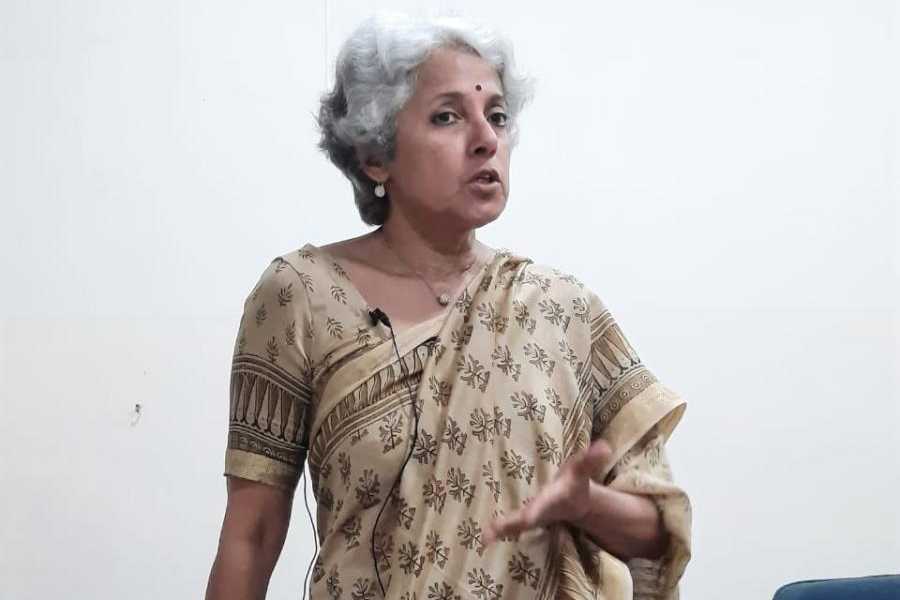Soumya Swaminathan, former chief scientist and deputy director of the World Health Organisation (WHO), on Friday spoke about gaps in education that children suffered during the Covid pandemic and how the climate crisis is causing anxiety to the young.
She was speaking on “mental health, as an emerging public health issue” at Manovikas Kendra, which is celebrating its golden jubilee.
Excerpts of her lecture and what she said on the sidelines.
Education gaps
When I travel around and speak with young people I do see, especially those who come from more marginalised communities the difficulties they are having in actually being able to cope now. Children who stopped going to Class IX and today are being asked to take Class X, XI and XII are not able to clear those exams because they did not have the support that is needed either then or today.
I think the issue is what kind of human capital we are building for the future of the country because we know the economy depends on the workforce. We need a well-educated, well-skilled workforce. So this is the time actually to do that assessment where are the gaps, what are the gaps and how do you fill those gaps.
Mental health
The prevalence of mental health conditions has increased quite a bit after the pandemic, particularly among young people.
What is most worrying is that the 18 to 25 age group, traditionally, was the most optimistic age group... The 18 to 25 age group has the most anxiety and is showing the maximum signs of mental health abnormalities. That is very worrying because obviously, the 18 to 25 age group is the one that is the future.
Climate crisis
Another crisis is probably even worse than the pandemic and that is the climate crisis.
The pandemic at least was finite, even though it lasted for three years.
A few years ago we were hoping to limit warming to 1.5 degrees centigrade. Most people believe that’s no longer possible that we have reached so many tipping points. What is still trying to be done is to limit it to as little a rise as possible. Even if 1.5 degrees is not attainable we need to keep it below two.
Impact on youth
One of the things that is affecting young people is the concept of eco-anxiety. Any young person who is aware of what is going on and can see the changes that are happening in nature, thats reading up on what the
global situation is... and then of course we know people like Greta Thunberg and many other young climate activists basically
are saying that they are going to have to face a world which is warming and which is going to have all these problems of water shortage. Many areas will become inhabitable.
They are calling actually upon world leaders to do something much more to change the states quo...Coastal cities of India including Calcutta, Mumbai, Chennai all of these have a danger of getting submerged before the end of the century, by 2100.
Air pollution
Altogether 97 per cent or 99 per cent of the world lives in places where the air quality does not meet the WHO (World Health Organisation) air quality standards.
People would think air pollution means if you are asthmatic you are affected, if you have a lung problem you are affected, or that you get a cough or get pneumonia. But that is not the only thing.
The particulate matter and all other things which are in the mix of pollutants impact not just the respiratory system but also the cardiovascular system because these micro pollutants are able to get into the bloodstream.
Air pollution has a very big impact and the vulnerable groups are children, pregnant women and the elderly.
People don’t pay attention to the air quality index in many cities. Each city varies in how many testing points it has.
